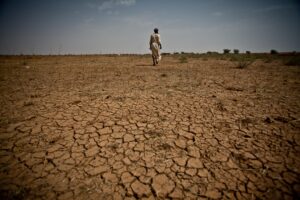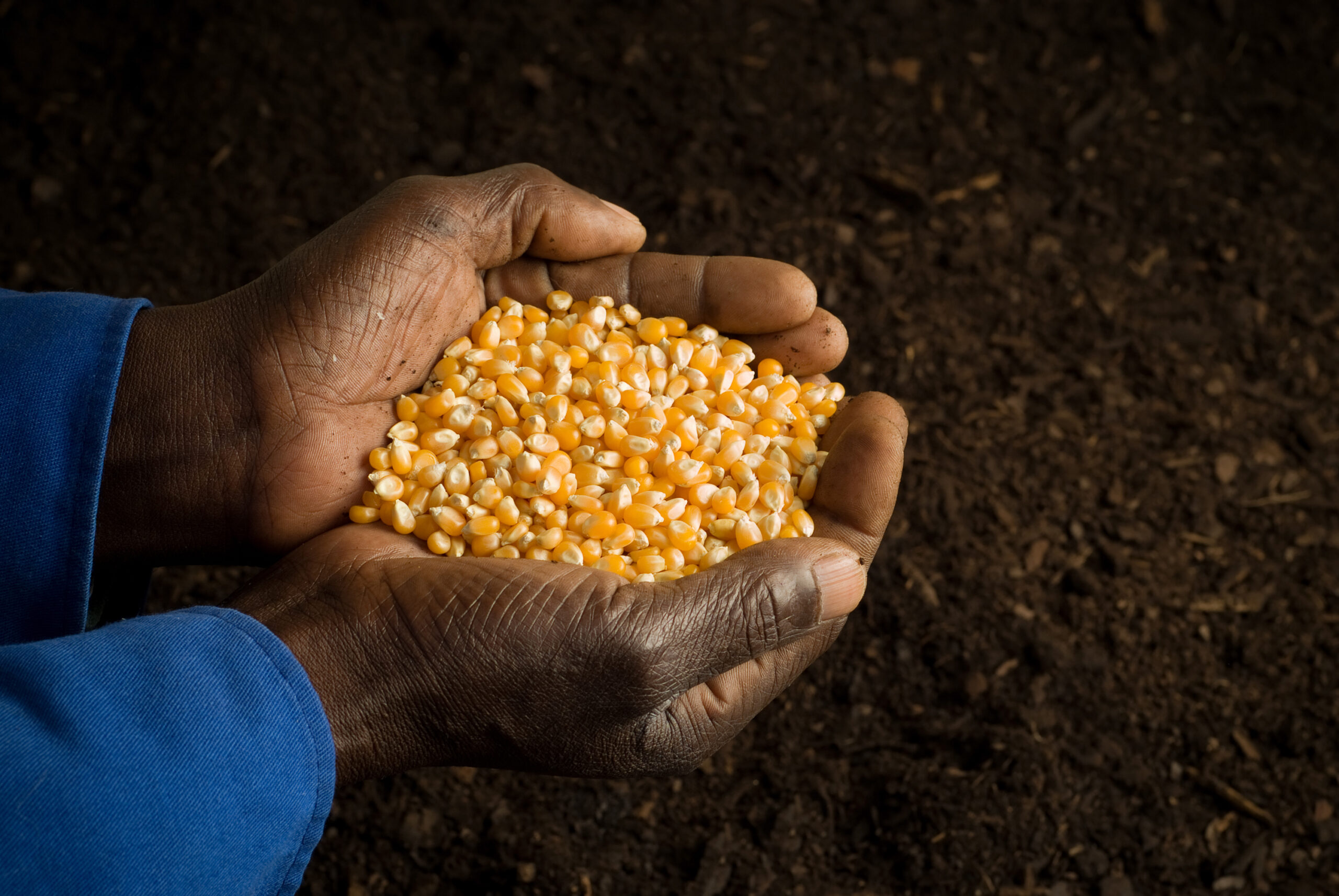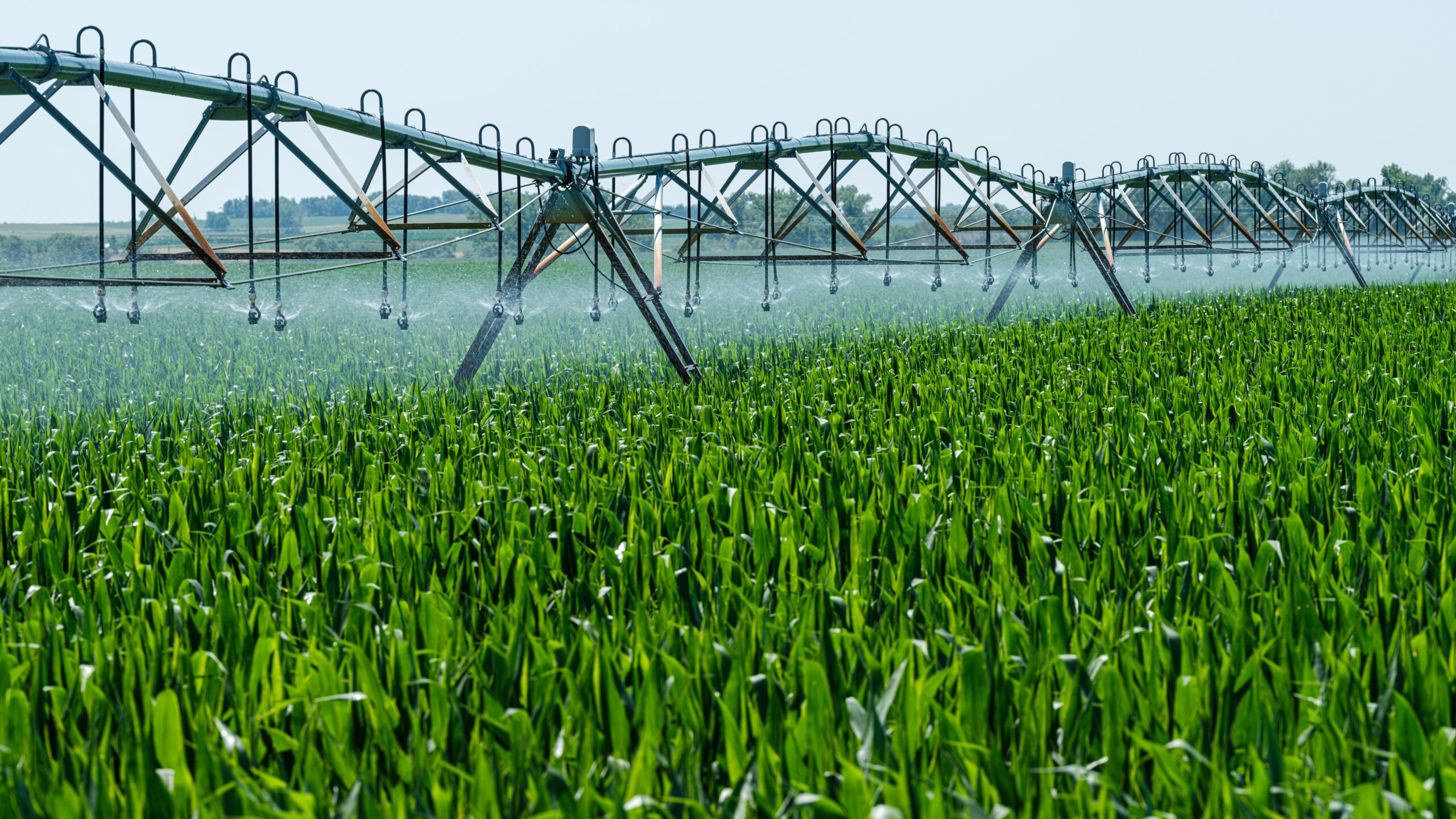South Africa’s food shortage in 2022
The compounding crises of climate change, conflict and the COVID-19 pandemic manifested in South Africa’s food shortage in 2022. The ensuing floods, droughts and supply chain disruptions affected the availability and affordability of basic goods for millions.
For households, the impact was double-digit inflation for food essentials and shortages, often due to affordability rather than availability. The combination of rising inflation, poverty, inequality and unemployment meant 88 per cent of South Africans struggled to afford basic goods and services, a 2022 survey by Debt Rescue found. The impact on quality of life and well-being brings a heightened risk of social instability and unrest. In South Africa, the country’s constitution recognises food as a fundamental human right.
A year of food shortages
While climate change is disrupting food production and vital supply chains around the world, the pandemic and Russia’s invasion of Ukraine laid bare the fragility of the global food system. Humankind depends on a handful of crops, such as wheat, maize and rice, for the majority of sustenance. Therefore, any disruption to production and trade becomes a global threat. Furthermore, as economist Wandile Sihlobo points out, food security is about more than sufficient supplies. It also requires food accessibility, affordability, nutrition and stability over time.
The causes of the food shortage in 2022
A number of short and long-term drivers are making South Africa’s food system more vulnerable, resulting in shortages and higher prices, which made basic goods unaffordable for many.
Climate change and agriculture
Climate change poses a significant threat to South Africa’s food production and security. The country is particularly vulnerable to climatic changes, with temperatures increasing at twice the global average rate. The biggest single risks to South Africa are climate change-induced heatwaves and droughts that could result in the collapse of the maize crop and cattle industry, warns Professor Francois Engelbrecht. “Maize-based systems, particularly in southern Africa, are among the most vulnerable to climate change… with yield losses for South Africa and Zimbabwe in excess of 30 per cent”, states the latest IPCC report.
These extreme droughts and heatwaves have already arrived, affecting the country’s crop yields for decades. But, more volatile and extreme climate conditions will continue to impact food production and human lives. In 2022, drought in the Northern Cape was linked to poverty, hunger and food insecurity. Extreme heat and drought in cities can also add to food shortages. In January, Cape Town recorded its highest-ever temperature at 45.2°C, breaking the previous record by almost 3°C. As South African journalist Yeshiel Panchia points out: “Urban water security is almost equal in importance to ongoing food security as is agricultural food production, as the fundamental logistics and economic activities of the supply chain that provides the access component of food security is often urban centered.”
Flooding caused by climate change also disrupted the food system in 2022. Scientists have confirmed that April’s heavy rain – where almost one year of rain fell in two days – was made twice as likely due to climate change. The rains caused deadly floods and landslides across the provinces of KwaZulu-Natal and the Eastern Cape. The flooding washed away crops and soils, damaged farmhouses and left agricultural fields water-logged.
Climate change and food supply chain issues
These unprecedented rains also shut down South Africa’s main port, as floods damaged crucial logistic infrastructure. The disruption to the export of produce and the import of agricultural-related goods is likely to have long-term ramifications for the agricultural sector, said Sandy La Marque, CEO of KwaZulu-Natal Agricultural Union (Kwanalu). “With the severe devastation of the infrastructure and, in particular, roads and bridges around the port, the passage of goods and services is highly restricted. Access to relevant drop-off and collection points for agricultural products and supplies, which are time sensitive, will [affect] … the sector”, La Marque told Business Day in April. “This most recent disaster, which has befallen KwaZulu-Natal continues to demonstrate how fragile the agricultural sector is, and the importance of preventive measures, maintenance, economic nodes, and corridors being identified and being prioritised.”

Russia’s war in Ukraine
The resounding impacts of Russia’s invasion of Ukraine are also attributable to food shortages in 2022. “For households chronically at risk of food insecurity, the Russian invasion is the latest in a long series of pressures”, writes Dr Elizabeth Vibert. The conflict has disrupted global grain supply chains, adding to food shortages and higher prices. The two countries account for almost 30 per cent of global wheat exports. Close to 50 countries – many low-income and in Africa – depend on these two nations for a large proportion of their wheat, other grains and cooking oils.
As a result, global prices of maize and wheat reached new record highs in 2022. They averaged an increase of 24.8 per cent and 15.6 per cent compared to the previous year, respectively. Some countries responded by initiating food export bans. However, this can worsen the situation, warn the World Bank. “These actions are self-defeating because they reduce global supply, driving food prices even higher. Other countries respond by imposing restrictions of their own, fueling an escalating cycle of trade actions that have a multiplier effect on prices.”
As well as impacting food supply, the invasion sent fossil fuel prices skyrocketing. Higher oil prices led to sharply higher freight costs for imports, resulting in dramatic price rises in shipped goods.
The food shortage 2022: Impact on households
Unaffordable food
The impacts of these global crises ultimately resulted in the squeezed supply of food and the corresponding elevation in prices. South Africa’s Household Affordability Index, which tracks food price data across the country, showed that the average household food basket cost R4,853 in December 2022. This is an increase of 13.5 per cent compared to the same month in 2021. The rapid rise means basic food products are becoming unaffordable, causing food insecurity. This is particularly the case for households that are either unemployed, receive low income, or have high population sizes, highlight researchers Adrino Mazenda and Saul Ngarava. These conditions make them acutely vulnerable to economic shocks.
As many as 30 million people in the country experience food insecurity each month, according to Food Forward South Africa, an organization addressing hunger in poor communities. “We are in a food security crisis in South Africa and we are finding people presenting with malnutrition. In the Eastern Cape, 12 children died of starvation and we will find more incidents like that as the country starts to manifest. We are also seeing opportunistic crime as a result”, said Andy Du Plessis, the organisation’s Managing Director. Without addressing food insecurity and inflation, the threat of civil unrest will continue, he warned.
Hunger and health
Food shortages and unaffordability mean one in ten South Africans go hungry every day, says Irene Labuschagne from Stellenbosch University. The result is high levels of malnutrition, which include undernourishment, micronutrient deficiencies and over-nutrition, she said. These can manifest in childhood stunting, with estimates suggesting this affected approximately 27 per cent of children in South Africa in 2016. Rates of zinc deficiency, which can lead to a loss of appetite, stunted growth and impaired immune function, are also high in South African children.
Another consequence of malnutrition is obesity, which has been increasing among both adults and children over the past two decades. Moving away from traditional diets to a less nutritious ‘western’ diet is one of the reasons for this, along with the affordability and availability of nutritious food. “Affordability also plays a big role in food choices, with profound health implications”, said Labuschagne. Lifestyle diseases related to nutrition, such as diabetes, heart disease, stroke and some cancers, account for about 40 per cent of total deaths in the country.
The global food shortage
From Latin America to Asia, 2022 brought food shortages and higher costs that impacted millions. However, Africa is at particular risk. As well as global food trade disruptions, climate change is driving prolonged and intense droughts in eastern Africa, Angola and the South African interior, impacting agricultural yields and driving a humanitarian crisis. In 2022, over 120 million people on the continent suffered high malnutrition or were unable to meet basic food needs, found the International Monetary Fund. This is a 30 per cent increase in people affected since early 2020.
The future outlook for food security
The impacts of climate change have already reduced global agricultural productivity by about 21 per cent since 1961, according to the World Bank. Over the coming decades, crop yields globally could fall another 30 per cent, while food demand could rise 50 per cent, says the UN. Scientists have warned that the heat and drought caused by climate change pose the biggest threat to food security and agricultural production worldwide. Without urgent action to address rising greenhouse gas emissions and strengthen our climate-vulnerable food system, declines in global yields will continue to pose an increasing threat to food supply and affordability. These conditions also exacerbate instability and conflict, due to competition over fertile land and water resources, warn the UN.
With this in mind, it should be an absolute priority for South Africa’s government to take bold and immediate action on climate to safeguard the future of South Africa’s fragile food system. Burning the fossil fuels coal, oil and gas is the leading driver of climate breakdown. Therefore, the priority should be to rapidly scale up clean energy generation and end fossil fuel expenditure.

Strengthening food insecurity in uncertain times
Alongside climate action, measures to enhance more varied, local food production can help to safeguard affordable, accessible food supplies in South Africa. “Importing countries in Africa should boost local food production to increase food sovereignty and make food systems more sustainable. This requires support for climate change adaptation and resilience in the region”, says Human Rights Watch.
Subsistence farming
One route to enhance domestic food supplies is promoting subsistence farming and smallholder agriculture. Evidence shows that these can provide a protective effect against food price inflation. Dr Jemina Moeng, Director of Smallholder Development at South Africa’s Department of Agriculture, Land Reform and Rural Development, agrees. Dr Moeng told the Daily Maverick that the biggest threat to food security in South Africa was the lack of subsistence farming. “A household garden in your backyard, even in a township or even in Sandton, will provide you with some vegetables. You don’t necessarily need huge farms. So the biggest threat is people shying away from home food production and wanting to rely on food purchasing, which relies again on the money you earn.”
One success story comes from N’wamitwa, where a group of women established a cooperative farm during a catastrophic drought thirty years ago. The garden is irrigated by water-saving drip hoses, and provides nutritious, affordable produce all year-round. Many of these women live in “extreme poverty”, as defined by the World Bank’s metric. However, their community garden has enhanced their food security for years, and served as a ‘lifeline’ to their village during the pandemic lockdown.
Urban food projects
The researchers Mazenda and Ngarava propose similar interventions to strengthen food supplies, suggesting that promoting sustainable urban agriculture would help reduce food insecurity. Community leaders should work with municipalities to plan and implement food programmes, they said. This would require urban centres to develop public-private partnerships in food production and supply chains to increase income from urban food projects.
The steps to reach this include investments in education, food production and irrigation infrastructure, support for households dependent on grants, in addition to implementing state food security policy programmes.
Food waste
Tackling the enormous problem of food waste could also have a powerful impact on food security. Currently, South Africa wastes approximately 45 per cent of its total available food supply – equivalent to more than nine million tonnes of food every year, according to South Africa’s Council of Scientific and Industrial Research. At a time when half the population endures food insecurity every month, tackling food waste to safeguard food supplies is an opportunity too big to ignore.
Related Articles
Climate change, hunger and South Africa’s future
A new climate change impact synthesis report highlights the effects of climate change on South Africa and its impact on people’s lives.
Advancing agriculture through green energy
If it were not for the ingenuity of South African farmers who make alternative green energy plans, the entire agricultural sector would be under much more pressure.




